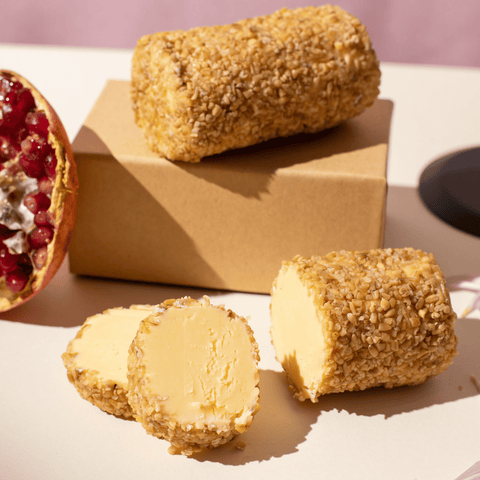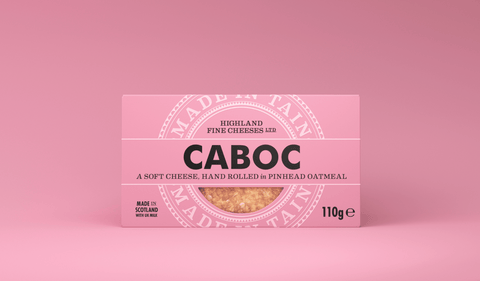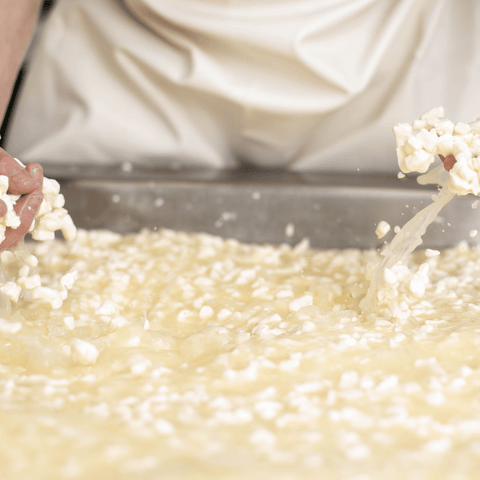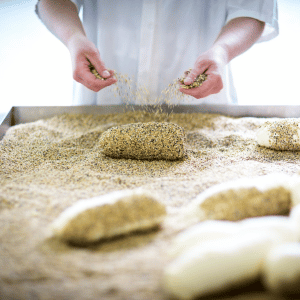


CABOC
Washed rind, high butter fat content and rolled in pinhead oatmeal, Caboc has medieval Highland roots in the ‘chieftain’s cheese’ created by Mariota de Ile who took the thick cream from the milk and matured it in barrels, instead of churning it into butter.
We don’t know whether the Chieftain died in battle or from consuming too much Caboc, so this cheese comes with a warning: a little goes a long way!
Rich butter rolled in porridge – a sort of heart grenade, only advised for those who are desperately low in cholesterol or have already enjoyed a triple heart bypass. Good luck!
Caboc is one of the oldest Scottish cheeses still produced. Often melted over potatoes or steak, why not try our little cabos melted over roasted vegetables or spread on oatcakes. Turn boring potatoes into delicious Skirlies mash like a proper Scot would!
110g hand rolled
Caboc offers a slight, tangy flavor with rich, creamy texture and a savory, nutty bite.
- Soft
- Creamy
Milk, possible traces of gluten in the pinhead oatmeal.
Typical values per 100g Energy Kj2495 / 605kcal, Fat 58.5g, of which saturates 32.31g, Carbohydrate 17.6g, of which sugars 17.6g, 0.6g, Protein 2.66g, Salt 0.5g

CABOC
The making of CABOC
Every cheese is crafted in Tain, ScotlandWe collect milk from local farms around Tain. Once the milk is received in our dairy, the milk goes through the pasteurisation process and will then be placed in vats. Cultures are added to begin the process of acidification. Caboc is a matured double cream cheese that is pressed so no rennet is used for this cheese
Draining and SaltingOnce a firm set has been achieved and the cream has soured, we had salt to our double cream and press the moisture out of our little Caboc
Shaping the Cheese – MouldingOnce the desired consistency is reached, our little Cabocs are shaped into small logs and rolled into pinhead oatmeal
MaturationCaboc can be left to aged for up to 6 month to develop its uniquely Scottish flavour





